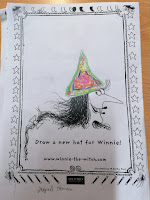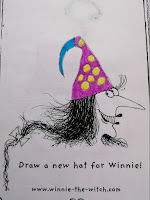UK-USA

quarta-feira, 4 de dezembro de 2019
The Jacket I wear in the snow
Carol singing
Christmas - We're kids in Britain
Pete the cat 12 Days of Christmas
terça-feira, 3 de dezembro de 2019
"Must Be Santa" by Bob Dylan
"Must Be Santa" is a Christmas song written by Hal
Moore and Bill Fredericks and first released in November 1960
by Mitch Miller on Columbia. A cover version by Tommy
Steele reached Number 40 on the UK Singles Chart in the same
year.
Based on a German drinking song, (the Schnitzelbank song)
"Must Be Santa" is structured as a call and response, with the
lead singer posing the question of who has a certain feature, with a chorus
responding that Santa Claus has said feature. After every other
verse, the list of features mentioned up to that point is reiterated,
followed by the chorus of "must be Santa" repeated three times and
ending with "Santa Claus."
Example:
Lead
singer: Who laughs this way, ho ho ho?Chorus: Santa laughs this way, ho ho ho!All: Ho ho ho, cherry nose, cap on head, suit that's red...
terça-feira, 19 de novembro de 2019
quinta-feira, 14 de novembro de 2019
Halloween activities || Students' works and activities || EBI da Praia da Vitória
sexta-feira, 8 de novembro de 2019
Kids History: The First Thanksgiving | History
Halloween Hats for Winnie The Witch - 5th Graders - EBI/JI Francisco Ornelas da Câmara
quinta-feira, 7 de novembro de 2019
FLAG of the USA! || The American Flag II Stars and Stripes || US History
Flag of the United Kingdom! || Union Jack || World Flags
terça-feira, 5 de novembro de 2019
segunda-feira, 4 de novembro de 2019
"Unique Monique" by Maria Rousaki (Author), Polina Papanikolaou (Illustrator)
"Unique Monique" by Maria Rousaki (Author), Polina Papanikolaou (Illustrator)
Monique, who has to wear a uniform to school every day, struggles to find a way to make herself stand out from the rest of her classmates.
quinta-feira, 31 de outubro de 2019
Poem - Remember Remember the 5th November
Bonfire Night | Guy Fawkes Day
Etiquetas:
Bonfire Night,
Festivals and Celebrations,
Guy Fawkes Day
terça-feira, 22 de outubro de 2019
The Addams Family Trailer II
quinta-feira, 17 de outubro de 2019
III. About Halloween by Elizabeth Hough Sechrist
II. About Halloween by Elizabeth Hough Sechrist
"On the eve of samhain bonfires were lighted on the highest hills, and from these fires the celts very solemnly and religiously rekindled the hearth fires of their homes. In Wales the hilltop were carefully watched by the people of the village until all the red flames had turned to grey ashes. Then there would be a mad race down the hill with much shouting and excitment for it was the belief that the devil would get the last one down.
The original observances of Samhain have been traced as far back as the time of Ancient Greece and the cult of Dionysus. Many of the rites performed by the Celts and their Druids were very cruel and terrible. But these horrors were eleminated when the Cristian religion was brought to Britain by the Romans."
quarta-feira, 16 de outubro de 2019
I. About Halloween by Elizabeth Hough Sechrist
"To find the very beginning of Halloween we must go back many, many, years ago.
Once upon a time the land witch is now Great Britain was inhabited by people called Celts. Perhaps you have heard of them. The Celts were what we call pagans. They worshiped the sun. They had many religious festivals and at all these they built huge fires on the hilltops in honor of the sun-god. Now, the priests of the people were called Druids, and it was they who performed all the religious rites at the festivals. At these rites they used sacred fires. It is from these fire-rites that the modern use of fire in many of our own celebrations has come. Who would suppose that the bonfires and torch parades at Halloween and perhaps even the lights of the Jack O'Lanterns came from the influence of these people who lived so many hundreds of years ago."
"One of the most important of the Celtic festivals, over which the druids presided, was Samhain. Samhain meant 'Summer's end'. It came in the fall of the year, just after harvest, and was celebrated on the last day of October. When the Roman people invaded Britain and introduced Christianity, this holiday was no longer called Samhain. It came to be Halloween."
Once upon a time the land witch is now Great Britain was inhabited by people called Celts. Perhaps you have heard of them. The Celts were what we call pagans. They worshiped the sun. They had many religious festivals and at all these they built huge fires on the hilltops in honor of the sun-god. Now, the priests of the people were called Druids, and it was they who performed all the religious rites at the festivals. At these rites they used sacred fires. It is from these fire-rites that the modern use of fire in many of our own celebrations has come. Who would suppose that the bonfires and torch parades at Halloween and perhaps even the lights of the Jack O'Lanterns came from the influence of these people who lived so many hundreds of years ago."
"One of the most important of the Celtic festivals, over which the druids presided, was Samhain. Samhain meant 'Summer's end'. It came in the fall of the year, just after harvest, and was celebrated on the last day of October. When the Roman people invaded Britain and introduced Christianity, this holiday was no longer called Samhain. It came to be Halloween."
terça-feira, 15 de outubro de 2019
domingo, 13 de outubro de 2019
The Little Old Lady Who Was Not Afraid of Anything
quarta-feira, 9 de outubro de 2019
"Meg and Mog" by Helen Nicoll and illustrated by Jan Pieńkowski
Meg and Mog is a series of children’s books written by Helen Nicoll and illustrated by Jan Pieńkowski. First published in the 1970s, the books are about Meg, a witch whose spells always seem to go wrong, her striped cat Mog, and their friend Owl. The first book was published in January 1972.
sábado, 14 de setembro de 2019
The Portuguese in the United States
Library of Congress
The Portuguese were the leading European explorers in the fifteenth century and it was through the efforts of Portuguese-born and sponsored men that many parts of the world, including the coast of present-day California, were discovered and mapped. They began settling in the United States several centuries later, although there were isolated Portuguese Jewish communities here beginning in the seventeenth century and in the Sandwich Islands, now Hawaii, in the eighteenth. In the late 1800s large numbers began to immigrate, often first working on whaling ships leaving from the Azores or Cape Verde Islands and settling in Hawaii, California, or New England. Eventually they would come to New Jersey and other parts of the United States. With the enactment of new immigration legislation in 1921, new arrivals dropped tremendously, picking up again in the 1950s after earthquakes devastated the Azorean island of Faial. The immigrants came largely from the Azores, but also from Cape Verde and Madeira, later from mainland Portugal and occasionally from other parts of the Portuguese empire, including Macau. They and their descendants have been active in all facets of life in the United States, from agriculture to industry to politics, and at the same time have introduced some of their customs, food, and even instruments to other Americans.
This project is sponsored by the Luso-American Development Foundation, and is part of the Transatlantic Digital Library project.
quinta-feira, 12 de setembro de 2019
quinta-feira, 4 de julho de 2019
Best School trays from Class D - 5th Grade
6th Graders are very busy with WH questions at Escola Francisco Ornelas da Câmara
6th Graders and teacher Lúcia Oliveira are very busy
with WH questions at Escola Francisco Ornelas da Câmara
Subscrever:
Mensagens (Atom)

















































